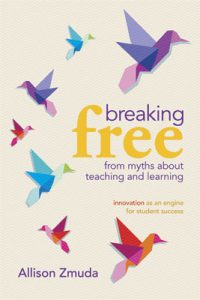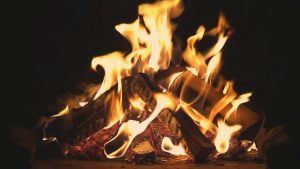 OK…. I’ll admit it and at this point, there is absolutely no use in trying to deny it. My family and friends know it as do our neighbours at the cottage ~ as I frequently get chastised. I love fire. I love building fires, watching them grow. I love getting lost in the flames and the multi-coloured embers. I love the smell of campfires ~ Day or night, summer or winter. There is a true art to building a fire that will sustain. It takes precision and at times patience. This past weekend, as we traveled North to our cottage, I read, “Breaking Free ~ from Myths about teaching and learning” by Allison Zmuda and within the pages, the author references this poem by Judy Brown
OK…. I’ll admit it and at this point, there is absolutely no use in trying to deny it. My family and friends know it as do our neighbours at the cottage ~ as I frequently get chastised. I love fire. I love building fires, watching them grow. I love getting lost in the flames and the multi-coloured embers. I love the smell of campfires ~ Day or night, summer or winter. There is a true art to building a fire that will sustain. It takes precision and at times patience. This past weekend, as we traveled North to our cottage, I read, “Breaking Free ~ from Myths about teaching and learning” by Allison Zmuda and within the pages, the author references this poem by Judy Brown
FIRE
What makes a fire burn
is space between the logs,
a breathing space.
Too much of a good thing,
too many logs
packed in too tight
can douse the flames
almost as surely
as a pail of water would.
So building fires
requires attention
to the spaces in between,
as much as to the wood.
When we are able to build
open spaces
in the same way
we have learned
to pile on the logs,
then we can come to see how
it is fuel, and absence of the fuel
together, that make fire possible.
We only need to lay a log
lightly from time to time.
A fire
grows
simply because the space is there,
with openings
in which the flame
that knows just how it wants to burn
can find its way.
Once we arri ved at the cottage, I started to unbury the pile of wood, tossed in a heap at the end of the
ved at the cottage, I started to unbury the pile of wood, tossed in a heap at the end of the
summer, as a result of a new wooden deck replacing an old, rotten one and build a fire that would not be subject to a nosy neighbour or a red indicator on the fire ban sign, and reflect on Brown’s poem and it’s connection to education and innovation.
As I built the triangular base in the firepit, I was conscious of ensuring that there was room for natural air flow. The small twigs, were nestled beneath the larger planks and the small amount of paper was gingerly crumbled to ensure that once the match was struck and contact was made, a flame would evolve. A flame that would lead to another flame and so on, until enough flames would begin to encircle the wood and it would come to life with dancing flames. But always ensuring there is enough space for the flames to dance and to demonstrate their brilliance. Knowing that adding lots of planks of wood would only smother the fire and not allow it to grow and reach towards the sky.
As I reflect on the current state of education, I can’t help but wonder if we are leaving enough space or are we piling on the “wood”, plank by plank ~ hoping for a bonfire, but instead becoming frustrated with the bursts of flames that die down as fast as they ignite.
It is in those moments of air, when we stop, question and truly reflect on the moves that we’ve performed. It is during those moments when true change will occur. That is the magic ~ that is the dance of the enduring flames.
And yet, there seems to be an unlimited number of strategies that one can try in order to improve student achievement. And with the best of intentions, it seems as if everyone is trying to get through their grocery list of things to try as fast as possible ~ somehow thinking that more strategies (wood) will equal greater results (bigger bonfire).
Brown refers to the open spaces as the fuel; not the wood.
How will you fuel the fire of learning in your classroom, in your school, in your organization? The answer might not be the next “greatest strategy that you find on Twitter or Pinterest!
Come write with me…

Sue,
Love the analogy to the space being the fuel – we all need space. I think that in order to truly improve our education system and the results for students we need more “space” to try new things, to reflect and to focus on what matters for our individual learners.
we also need the spark to ignite the passion for what we are doing/learning about, but putting on more pressure is not helping produce the results we are ultimately after. Taking a step back, tending the fire slowly and carefully, with reflection and careful implementation of new initiatives over time will produce a much better burn, with results lasting longer.
I know I am taking time in my classroom to meet the needs of my students, this also means that I am feeling the pressure of what I am not “covering”, but I keep reminding myself that this pace is what they need. Their needs have to come first! We will get there slowly, but surely (I hope).
Sarah